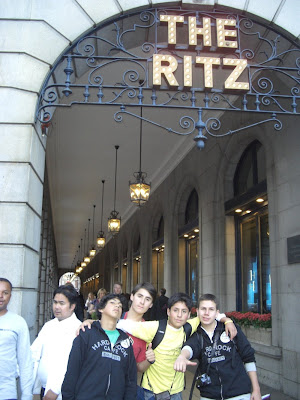 Nine of our students and their teacher Mr Fausto Hernandez are currently studying at Netherhall House, London.
Nine of our students and their teacher Mr Fausto Hernandez are currently studying at Netherhall House, London.So far they have been studying in the mornings, and visiting sites in London during the afternoon – including the British Museum, Tower Bridge and the Houses of Parliament. They have also been out of London, visiting the University of Cambridge. During their time at Cambridge they went punting on the river.
The director of Netherhall, Mr Peter Brown, commented on their high level of English. Mr Fausto Hernandez mentioned that the students are making good friends with international students who are staying at the residence, where English is the only the form of communication.
This weblog will be updated with pictures from the students during their time in the UK. To enlarge the pictures displayed, click on them.
Sean Redmond
Course organiser
sredmond@intisana.com











